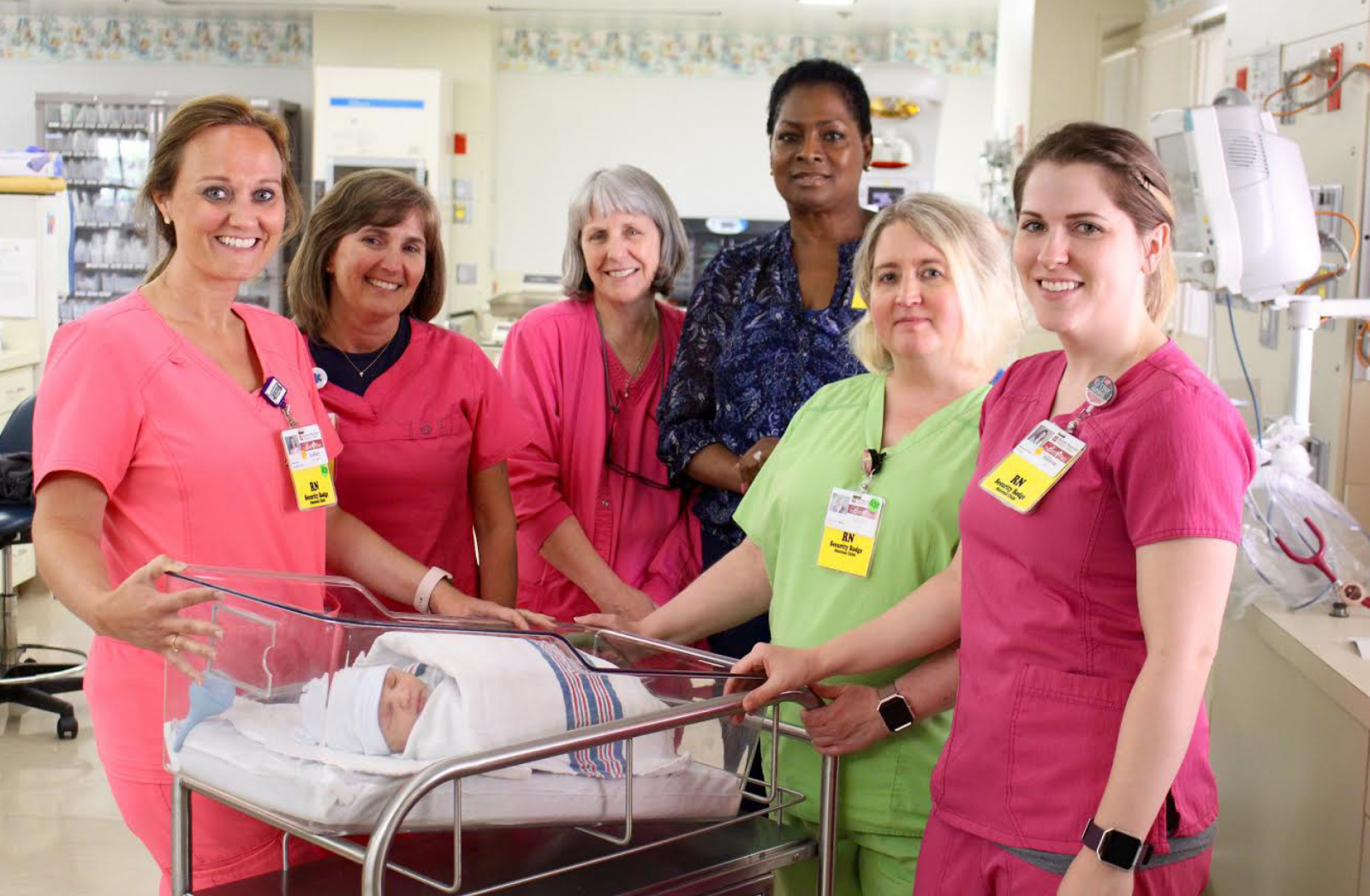What’s Best for Babies

Under Director for Maternal Child Antonette Reed, Wadley Regional Medical Center institutes skin-to-skin contact during “the golden hour”
In the past, when a baby was born at Wadley, the procedure was as it is at most hospitals in the U.S.: the cord was cut, the baby was wiped off, Mom and Dad got to take a quick peak, and then the newborn was whisked to the hospital nursery. After a bath, vitals, needle sticks, eye drops, Vitamin K shots, and finally, careful placement in a bed, the baby would be swaddled tight in a warmer so that grandparents and friends could peer through the hospital nursery windows, take pictures, and celebrate the new arrival. The practice was standard and had been for decades. The mother was exhausted from labor, and for those few hours while the nurses handled the business of the newborn, she could rest. A little over a year ago, however, things changed—for the benefit of the baby and mother both.
Antonette Reed, Director of Wadley’s Maternal Child, came to Texarkana approximately one year ago. Reed is passionate about ensuring that her department’s practices are all evidence research-driven, which is why, now, babies born at Wadley are immediately given to mothers for skin-to-skin time during “the golden hour,” or the first hour after birth. “With skin-to-skin, the baby is immediately put on mom’s bare chest in between the breasts, and a warm blanket covers the baby,” Reed said. “This method promotes the natural crawl to the breast, thermoregulation of the baby’s temperature, and decreases any stress the mom or baby is feeling. Studies have [shown] that it is far better to keep the baby in the delivery room where nurses can still prick and prod and treat the baby’s eyes while the newborn is with mom [than to do so in the nursery],” Reed explained.
Ashley Eddy, Supervisor of the Nursery, added that these new practices benefit the mother as well as the baby: “Skin-to-skin is really good for the mom, too,” she said. “There is a white, waxy substance on the baby’s body called vernix caseosa; this has been covering the baby for the entire time the baby was in utero. Babies are born with other fluids and substances on them, too, and we can wipe the blood and fluids off and keep the vernix caseosa. There are so many good properties in that vernix that most mothers, when they know the health benefits, will ask us to leave it on.” The vernix caseosa has antimicrobial properties that can protect newborns from infections, and the coating contains antioxidants, which also serves as anti-infection and anti-inflammatory properties. It is also a natural moisturizer that keeps the infant’s skin hydrated.
Additionally, it is during the golden hour that the newborn is most awake, making it a great time for Mom and Baby to attempt feeding. Reed stresses the importance of breastfeeding, especially that very first teaspoon of rich colostrum, which is full of antibodies. “Even if the baby is not wanting to feed,” Reed said, “a mom can squeeze out that colostrum for baby, and you can put it in a teaspoon and carefully spoon it into the child’s mouth. It is so rich in proteins. We encourage breastfeeding to all of our new mothers. Carlotta Endsley is an International Board Certified Lactation Consultant who has been at Wadley for a long time, and she is dedicated to helping mothers breastfeed,” Reed said.
Two years ago, Endsley established a breastfeeding support group for new mothers, and she also offers classes for expectant moms.
In 2004, Wadley became a Texas Ten Step Hospital. Texas Ten Step Hospitals are based on the World Health Organization/UNICEF’s Ten Steps to Successful Breastfeeding, a program aimed at increasing breastfeeding initiation rates. To achieve this acknowledgment, a hospital must be designated as a Texas Mother-Friendly Worksite, evaluate their breastfeeding policies and maternity care practices, and educate all healthcare staff routinely with evidence-based courses.
Wadley Regional Medical Center delivers close to 1,200 newborns a year. Every mother is educated about the benefits of skin-to-skin, breastfeeding, and being the best mother she can be. As science provides more and better information about what babies need, Wadley intends to make sure its maternal care reflects the best practices in medicine for newborns and their parents.









